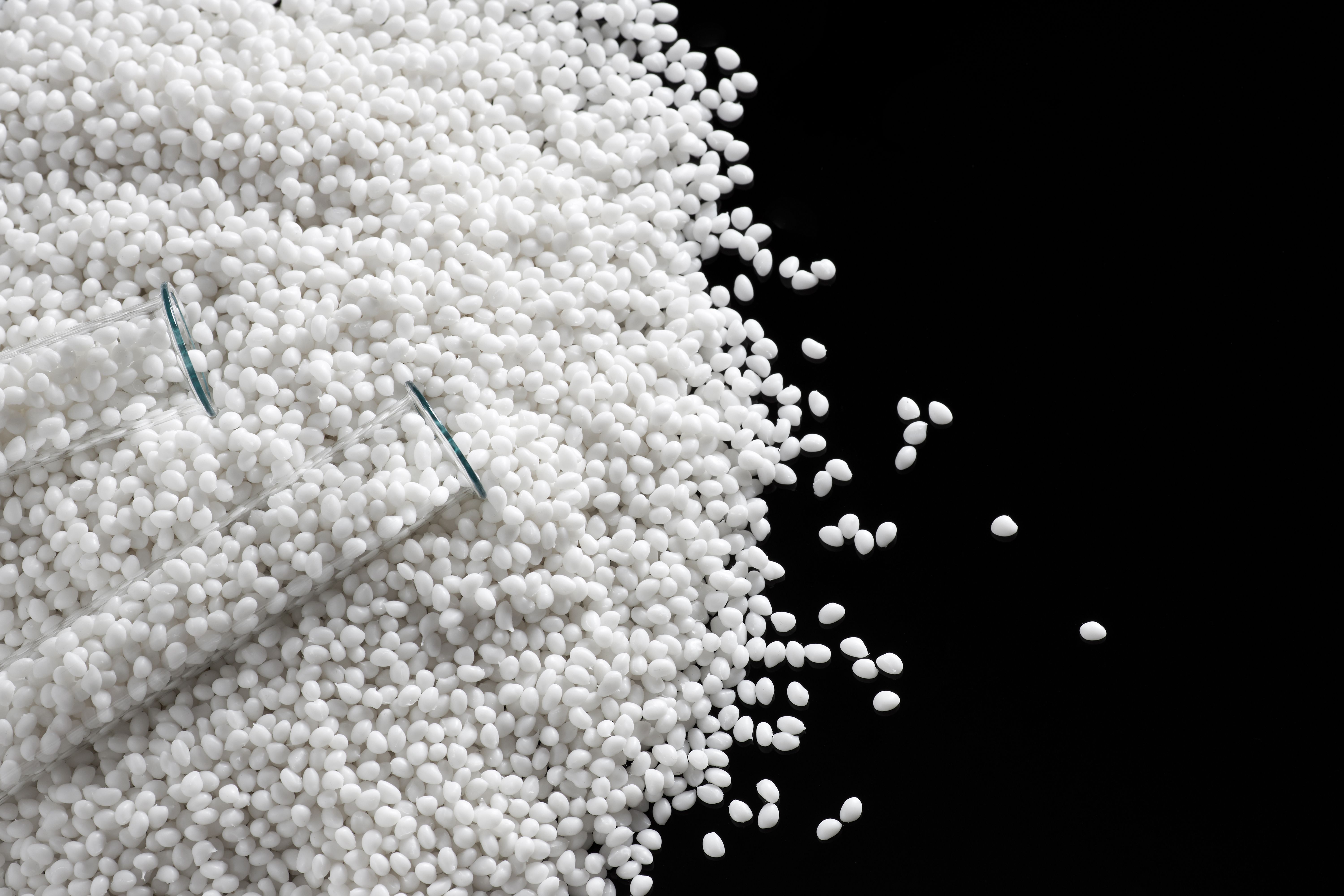Revolutionizing Polymer Analysis: Nano Objects Enhance Laser Spectroscopy for Handheld Devices
A research group has made significant progress in enhancing the sensitivity of laser-induced breakdown spectroscopy (LIBS) for analyzing polymer additives.
Polymer additives are important when it comes to imparting essential properties to plastic materials. However, analyzing certain elements such as Sb, Pb, or P present in these additives using laser-induced breakdown spectroscopy (LIBS) has been difficult, especially when employing handheld devices (1). A breakthrough study by researchers at CNRS Université de Lyon in France, and published in Spectrochimica Acta Part B: Atomic Spectroscopy, has showcased significant advancements in the field of nanoparticle-enhanced LIBS (NELIBS) through the evaluation of nano objects, leading to enhanced sensitivity for element detection in plastic samples (1).
Laboratory tubes for research with white plastic polymer | Image Credit: © SKfoto - stock.adobe.com

NELIBS is a technique that improves the sensitivity and performance of conventional LIBS analysis by incorporating nanoparticles into the process (1). In NELIBS, nanoparticles are introduced to the sample surface or suspended in a liquid medium containing the sample. When a laser pulse is focused on the sample, it generates a plasma plume, causing the nanoparticles to interact with the plasma (1). These nanoparticles act as enhancers by absorbing the laser energy and generating localized surface plasmons (1). As a result, the plasma temperature and density increase, leading to enhanced emission signals from the sample. The enhanced signals provide a more sensitive and accurate detection of elements. As the researchers noted in their study, this is especially true for those with low atomic or molecular emission intensities (1). The choice of nanoparticles plays a crucial role in determining the degree of signal enhancement achieved in NELIBS (1). By optimizing these parameters, researchers can improve the analytical performance of LIBS for various applications, including the analysis of polymers and other materials (1).
The conventional LIBS technique has encountered limitations in detecting elements such as Sb, Pb, and P, because of its inherent lack of sensitivity, particularly when utilized in handheld devices (1). Addressing this issue, the researchers focused on the recent progress in NELIBS, which has shown improved signal enhancement primarily in conductive materials (1). By strategically preparing and evaluating nano objects with diverse shapes and sizes, they aimed to enhance element signals in plastic samples (1).
The study demonstrated that nano objects in the forms of ellipsoids, bipyramids, and spheres significantly increased the sensitivity for detecting several additives, including P, Sb, Mg, and Pb (1). Notably, gold ellipsoids of small dimensions exhibited the most substantial signal enhancement. This breakthrough finding paves the way for more accurate and efficient analysis of polymer additives using LIBS techniques (1).
Furthermore, the researchers observed that NELIBS not only amplified the signals of specific elements but also increased the detection capability of the challenging element fluorine, highlighting its versatility in quantitative analytical applications for plastics (1). The NELIBS approach exhibited a remarkable enhancement in the CaF molecular band signal by a factor of 2, further validating its potential for broader molecular analysis (1).
Using NELIBS in handheld devices has implications for industries involved in polymer manufacturing, quality control, and material characterization. The enhanced sensitivity and improved element detection provided by NELIBS offer a promising solution to address the limitations of conventional LIBS techniques, empowering researchers and engineers in their pursuit of better understanding and optimizing the properties of plastic materials (1).
The study conducted by Nicole Gilon and her team at CNRS Université de Lyon marks anadvancement in the field of laser spectroscopy and sets the stage for more sophisticated and accurate analysis of polymers using handheld devices. With further developments and refinements, NELIBS holds the potential to revolutionize the way we analyze and engineer plastic materials, contributing to a more sustainable and efficient future.
Reference
(1) Sahili, Reinert, T.; Baskali-Bouregaa, N.; Desert, A.; Gilon, N.Nano objects evaluation for nanoparticle enhanced laser induced breakdown spectroscopy analysis of polymers using a handheld device. Spectrochimica Acta Part B: At. Spectrosc. 2023, 205, 106697. DOI: 10.1016/j.sab.2023.106697
Solving Polymer Problems Using IR Spectroscopy
July 12th 2017Naoto Nagai, of the Industrial Research Institute of Niigata Prefecture in Japan, has been studying the potential of IR spectroscopy for investigating higher-order structures of polymers. He and his colleagues recently looked at the IR spectra of polyoxymethylene (POM) mold plates and the cause of occasional resin cracks.